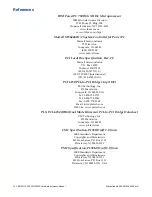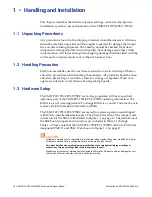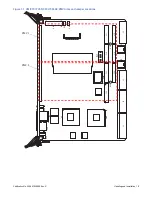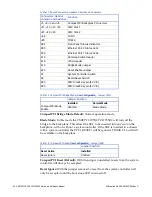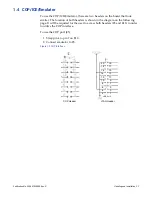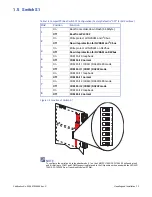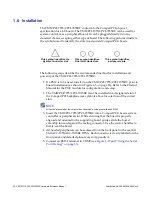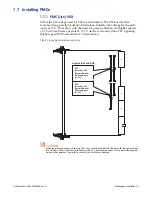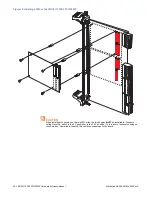
12 VMICPCI-7055/CPCI-7055RC Hardware Reference Manual
Publication No. 500-657055-000 Rev. G
Overview
Abaco Systems’s VMICPCI-7055*/CPCI-7055RC* are full featured IBM
®
PowerPC
®
based, single board computers (SBCs) in a single-slot, passively
cooled, Eurocard form factor that utilizes the advanced technology of the next
generation Marvell
®
chipset. The VMICPCI-7055/CPCI-7055RC are compliant
with the CompactPCI
®
Specification PICMG
®
2.0, Rev. 3.0 and feature a universal
PCI-to-PCI bridge, allowing the board to function as a system controller or
peripheral SBC in multi-SBC systems.
The VMICPCI-7055/CPCI-7055RC provide features typically found on desktop
systems such as:
• Up to 1 GByte DDR 400 SDRAM with ECC
• Support for three Gigabit Ethernets (one front access and two optional
PICMG 2.16 compliant or standard Gigabit Ethernet (option dependent) via
the CompactPCI J3)
• Ultra DMA IDE drive support (secondary IDE, requires VMIACC-7055/
ACC-7055RC)
• Three serial ports (one RS232 (COM0) via front panel, two RS232/422/485
(COM1 and COM2) via CompactPCI J3)
• Real-Time clock/calendar
• Front panel reset switch
The Marvell chipset allows the VMICPCI-7055/CPCI-7055RC to provide
enhanced features such as Ultra DMA IDE support. The standard desktop
features of the VMICPCI-7055/CPCI-7055RC are described in
Chapter 2
of this manual.
The VMICPCI-7055/CPCI-7055RC provide features useful to embedded
applications such as:
• PICMG 2.16 support
• Universal CompactPCI support (system controller or peripheral)
• Remote Ethernet booting
• Up to 2 GByte of CompactFlash
• Software-selectable Watchdog Timer with reset
Additionally, the VMICPCI-7055/CPCI-7055RC offer two PMC expansion sites
with front panel access and I/O routing to the J5 connector of the CompactPCI
backplane. The VMICPCI-7055/CPCI-7055RC are capable of executing many of
today’s embedded operating systems such as VxWorks
®
or Linux
®
. The
embedded features of the VMICPCI-7055/CPCI-7055RC are described in
of this manual.
The VMICPCI-7055/CPCI-7055RC are suitable for use in applications ranging
from telecommunications, simulation, instrumentation, industrial control,
process control and monitoring, factory automation, automated test systems, data

















